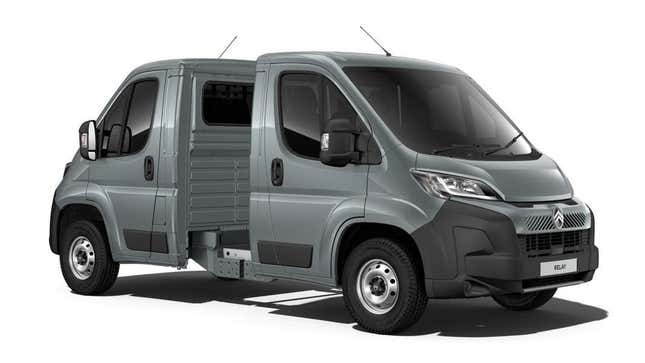
If you happen to end up on Citroen’s website and decide to configure one of its Relay commercial vans, you’ve got plenty of options. There is, of course, a panel van version, as well as a window van, several choices of chassis cab and even a floor cab. The most interesting and possibly most confusing choice is, hands down, something called the Back-to-Back that looks like someone at Citroen got drunk and decided to sell a push-me-pull-you for fun.
As Motor1 reports, though, there’s a method to the madness. While both cabs are fully functional, the point isn’t to sell a van that allows British plumbers to engage in hilarious hijinks while actually causing more problems than they fix. No, the reason Citroen sells the Relay this way is because so many aftermarket manufacturers really only need the cab when building their campers or motorhomes or whatever else they decide to get into.
Citroen could easily have sold cab-only models a la carte, but without any rear wheels, shipping them and moving them around for final assembly at the aftermarket upfitter’s shop would be incredibly inconvenient. By bolting two cabs together, though, it simplifies shipping, saves money, reduces waste and makes everybody happy. The fact that the Relay is front-wheel drive also makes it simpler to sell them two at a time. The potential for shenanigans if someone decides to drive the Relay Back-to-Back without separating the cabs is only a bonus.
And it really does save those companies money. You could buy a Relay chassis cab for £36,882, but if you don’t need the chassis behind the cab, you’ve got two extra wheels and the chassis to get rid of. Alternatively, you could buy a Back-to-Back for £36,018 and get two cabs for less than the price of one chassis cab. If you were running an aftermarket camper company, you’d probably be pretty excited about those savings, too.

